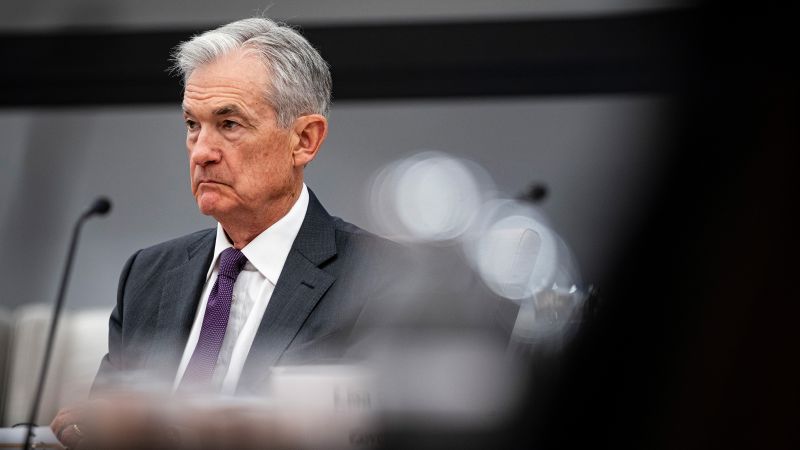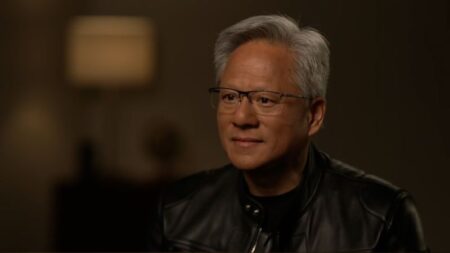The ongoing conflict between President Donald Trump and Federal Reserve Chair Jerome Powell has become a significant focal point in American financial and political circles. Over time, Trump’s critiques of Powell’s management and monetary policies have transitioned from mere grumbling into a far more coercive and orchestrated campaign aimed at undermining the chair’s independence. This development warrants careful examination and vigilance within financial markets, as the stakes involved transcend the typical adversarial relationship often seen between a president and a head of an independent federal entity.
Trump’s efforts have recently escalated, underpinned by a more organized strategy orchestrated by White House advisers aimed at increasing public pressure on Powell. While discussions about Powell’s removal are not currently on the agenda, the underlying discontent expressed by Trump regarding the Fed’s refusal to lower interest rates reflects a power struggle that is very much at the forefront of U.S. economic policy. Sources close to the situation indicate that the ongoing frustration is leading to heightened attempts to sway both Powell and the Federal Open Market Committee (FOMC) into adopting a more favorable stance toward lower interest rates.
In a candid revelation during a recent interview, Trump disclosed his struggles in persuading Powell, likening his tactics to a multifaceted campaign rife with both aggressive and supportive rhetoric. His unrelenting push for the Fed to respond more directly to the administration’s fiscal goals underscores a misunderstanding of the central bank’s essential independence. Just weeks prior to these revelations, Trump had lamented his perceived failures in influencing Powell, stating, “I call him every name in the book trying to get him to do something… I’m nasty. I’m nice. Nothing works.”
The administration’s current maneuverings appear to be building on Trump’s recent admission of frustration, with advisers intensifying their campaign against Powell. The sudden surge in this effort began with Office of Management and Budget Director Russell Vought prompting inquiries regarding Powell’s recent congressional testimony and its relation to federal building regulations. Vought’s letter, which insinuated potential legal ramifications for Powell, was widely circulated on social media, amplifying the pressure on the Fed chair.
The intricate nature of this power play mirrors a familiar tactical approach by Trump. It often begins with a seemingly benign allegation or inquiry, which can then be escalated to an investigation, thereby delegitimizing opposition voices. The fact that Vought, a key Trump ally, is at the helm of this campaign signals that the administration is taking a serious stance regarding managing its relationship with the Federal Reserve.
Concerns over the possible ramifications of attempting to remove Powell from his position continue to loom large among Trump’s advisers. There are widespread fears that any such action could lead to market turmoil, which would directly impact the stability of the U.S. economy. Former Fed Governor Daniel Tarullo articulated this concern succinctly when he stated, “If there were an effort by the president to remove the chair, the market reaction would be very significant.” The expectation of severe financial fallout is a considerable deterrent for the administration when contemplating drastic measures against Powell.
While the Trump administration has not officially launched efforts to undermine Powell’s tenure at the Fed, there is an apprehensive acknowledgment that the central bank operates under a unique set of constraints, which limits Trump’s influence. Operating as a “quasi-private entity,” the structure of the Federal Reserve allows it a degree of insulation from direct political interference, as underscored by a recent Supreme Court ruling. However, this does not preclude the administration from attempting to exert pressure through other means, as seen through its recent strategies.
The current strategies are not merely about Powell as an individual but extend to the broader goal of shifting the sentiment among FOMC members. Several potential candidates for Powell’s position have been suggested, indicating that the administration may be laying the groundwork for a possible transition in leadership that aligns more closely with Trump’s economic policies.
As the administration tiptoes around Powell and the Fed, the ongoing situation remains fluid, reflecting a broader ideological battle over the role of the Federal Reserve in American economic life. Trump’s visible disdain for Powell’s monetary policies and his relentless pursuit of lower interest rates illustrates a profound conflict that may influence both short-term financial market dynamics and the broader economic landscape in the United States. As the situation develops, stakeholders across various sectors will need to keep a close eye on both political maneuverings within the White House and the resulting impacts on Federal Reserve policy and market reactions.










